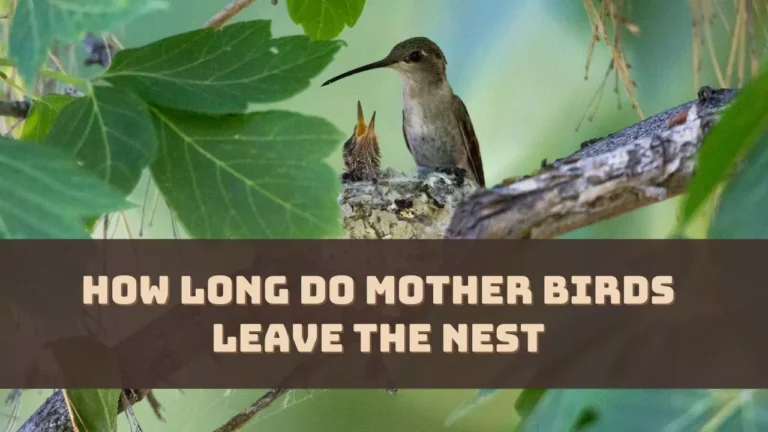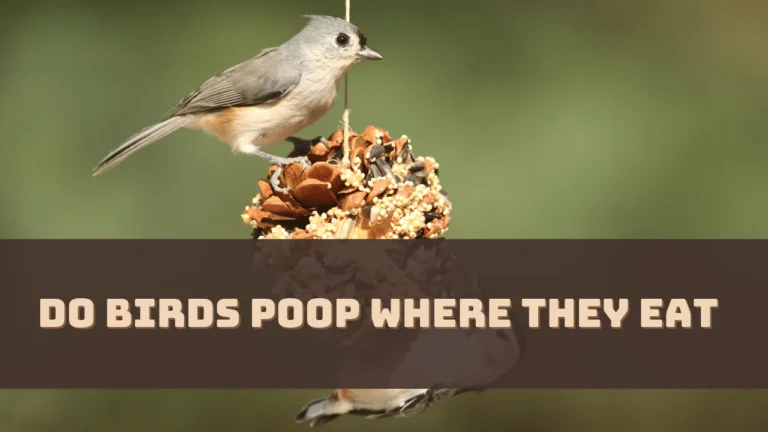The incubation period for birds varies from species to species, for smaller birds, such as songbirds they can take 11 days to 2 weeks whereas larger birds such as woodpeckers can take 3 weeks to 1 month. Many birds leave the nest immediately after the eggs hatch whereas others take the responsibility to feed the chicks.
So, let’s get to know more about the incubation period in birds and the type of variations seen among them.
How Does the Incubation Period Begin?
Birds are seen to lay eggs and then incubate them until they hatch. Various factors affect the incubation process such as ambient temperature, humidity and predatory threat. With more than 10,000 different species of bird found on the earth, it becomes very difficult to give a straightforward answer as to how long it takes for eggs to hatch.
The incubation period begins right after the female lays a fertilized egg in the clutch. Some birds might also wait to begin the incubation until they have laid the second egg while others wait until all the eggs are laid in the clutch. There are different strategies that birds apply and these have both advantages and disadvantages.
When a bird’s incubation starts, from the first day, the hatching sequence is also followed in the same way and if the bird incubates after the second egg is laid, then the first two hatchlings are seen to be larger and stronger compared with the other in the clutch. But, for the birds who wait for all the eggs to be laid and then incubate, the hatching process begins at the same time and all the hatchlings are of similar size and strength.
Factors Affecting the Incubation Time Among Birds
There are species-specific traits that affect the incubation period of the bird or how long they would sit on the egg. Other factors are like:
- Temperature, humidity, ventilation and exposure to natural light also affect the development of the embryos.
- Proper feeding for birds incubating eggs also provides the body condition that would help them tolerate a wide range of temperature changes.
- The size of the egg also affects the incubation period, whereas the larger eggs need a longer time to develop and smaller eggs hatch quicker comparatively.
- Other than this, the shell composition, shell thickness texture and egg positioning also influence the incubation period of the egg.
How Long Does the Incubation Period Take?
An incubation period can be in a range of 11 days to 3 months based on the bird’s species; smaller birds usually complete the incubation and hatching of the eggs quicker than larger birds. However, there are certain exception rules as well.
Passerines
These are known to be the largest group of birds also referred to as song words and include the smallest bird species. They have the smallest incubation period where hummingbirds have an average of 14 days, finches have only 11 days of incubation and some species like tropical flycatchers have much longer incubation between 17 to 26 days.
Poultry and Waterfowl
The domestic poultry which has been bred from wildfowl takes 21 days for the eggs to incubate and hatch. Domestic chicken breeds also use a selective method to eliminate broodiness, where the bird attempts to raise a clutch of eggs. Ducks usually take 28 days to incubate, along with Turkey and geese incubate within a range from 28 to 33 days.
Birds of Prey
The incubation period for birds of prey also varies based on species. The Bald eagle takes 35 days to incubate, the golden eagle takes 45 days whereas the great horned owl takes on an average 33 days and a hawk takes 21 to 42 days to incubate. Similarly, the red-tailed hawk has an incubation period of 28 to 35 days and the American Kestrel takes 26 to 32 days.
Ratites
Ratites are large flightless birds such as ostrich, emu, rheas and kiwis. Ostrich takes an average of 36 to 45 days incubation period, whereas the emu takes longer which ranges between 46 to 56 days.
What is the Incubation Process Seen Among Birds?
During the incubation period, the birds are seen sitting on the eggs in their nest and they use their body heat to maintain the constant temperature of the egg. The incubation period varies between a little below the body temperature of the parent bird and so the temperature has to be balanced by the mother bird or whoever is incubating the eggs. If the temperature goes above 104 °F, then it would damage the eggs or even stop them from developing, on the other hand, if the temperature is below 80.6 °F, then there can be an inconsistent development in the eggs.
What is a Brood Patch?
Brood patch or incubation fat is used by most birds to incubate the eggs. While preparing for incubation, birds are seen to form a highly vascular patch on their underside, where the feathers covering this patch fall out or they pluck them out. Here this naked skin which is rich in blood vessels is in contact with the surface of the egg. This helps the bird to sense the temperature of the egg and adjust the blood flow to the temperature of the skin and keep the egg safe. However, there are exceptions too, where birds do not develop brood patches.
In most cases, only the females are seen to incubate the egg, but in some bird species it is seen the male is solely responsible for incubating the egg and the female does not develop the brood patch. While in others, both develop brood patches and take turns to incubate the egg.
Alternative Means of Incubation
Some birds use the skin of their webbed feet as a brood patch, such as in pelicans and penguins. They use their feet to transfer the body heat to the single egg whereas birds like the megapods of Australia need to keep the eggs warm and for which they create a compost heap.
Why does the Bird Turn the Eggs?
The birds need to turn the egg regularly so that the membrane inside the egg does not stick to the inner wall of the shell membrane. Some birds are seen doing this activity throughout the day whereas some turn the eggs after every few minutes. In many birds, it is also seen that they turn the eggs once every hour. In the case of birds who build a swinging nest, that sways in the breeze, do not need to turn the eggs, but due to the movement of the nest, they need extra care to protect them.
End of Incubation
When the incubation period ends the baby birth hatches out of the shell. They use an egg tooth to crack the egg from inside and then slowly push their way out of the egg. There are two types of birds, one is Precocial where the chicks hatch along with soft feathers and can move right after they hatch. These are mostly seen in ground-dwelling birds and they start following their parents from the first days; whereas the other variants are Altricial which are relatively helpless chicks and they are born naked with their eyes closed. These birds have a shorter incubation period and require time to develop after hatching.
What is Artificial Incubation?
Artificial incubation is implemented in farms and poultry houses, where incubators are used to maintain a constant temperature of the chicken eggs. Here no mother bird is required, however, you need to put on labor for the turning purpose and check the egg regularly.




